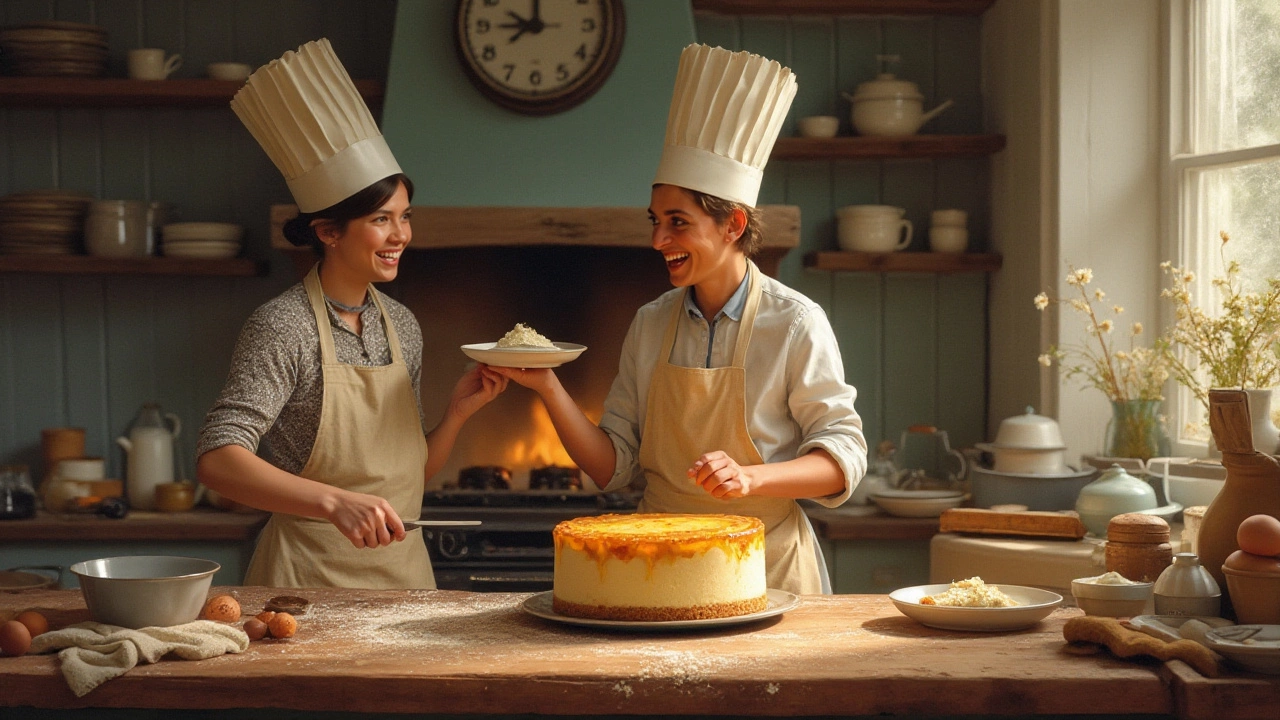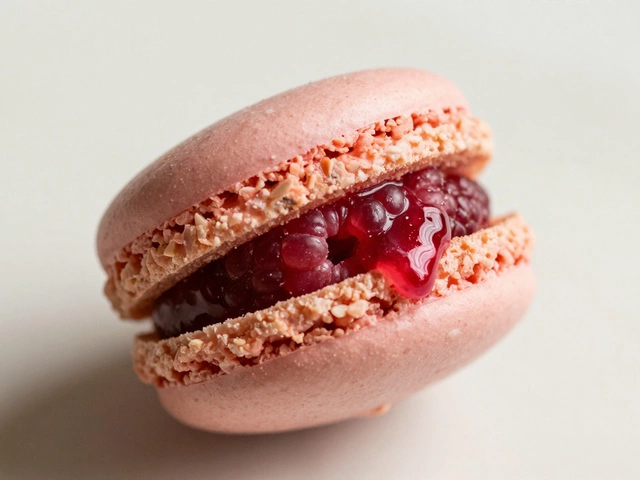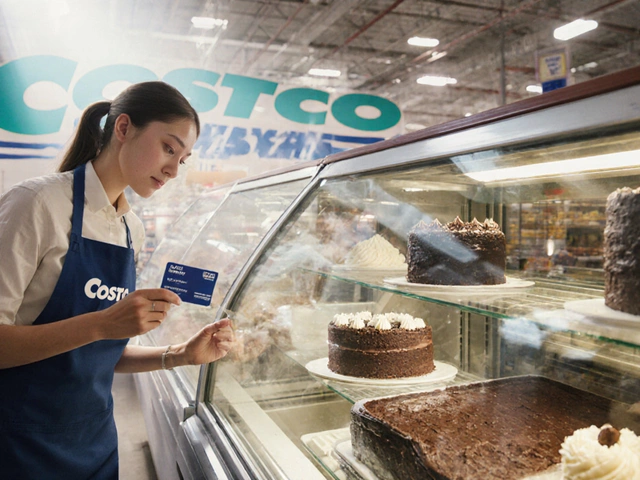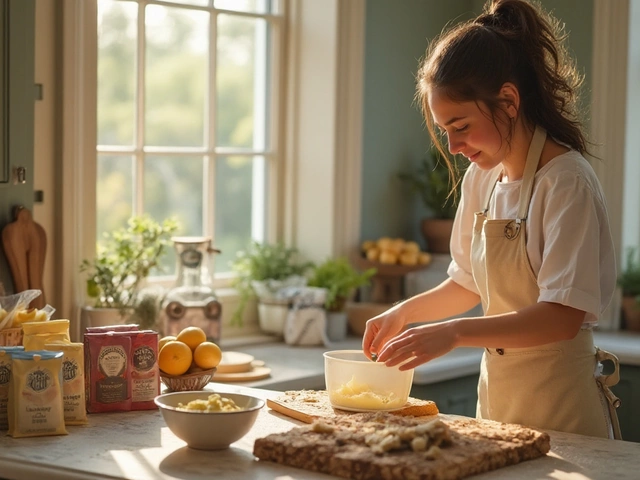Many dessert enthusiasts believe that a slice of cheesecake is akin to heaven on a plate; however, not everyone agrees on the best texture. Some like it luxuriously dense, while others enjoy it being cloud-like and fluffy. Understanding the core components and methods that contribute to your cheesecake's texture may empower you to master this delightful dessert.
Join us on this creamy journey as we delve into what makes cheesecakes uniquely dense or airy. By making small tweaks in your recipe or adjusting your baking technique, you can control how your cheesecake turns out.
- Ingredients that Influence Texture
- Mixing Techniques and Their Effects
- Baking Methods and Temperature Control
- The Role of Chilling
- Tips for Perfect Cheesecake Every Time
Ingredients that Influence Texture
When it comes to cheesecake, the tug of war between dense and fluffy textures begins in the ingredient list. The primary cultivator of texture is the type of cream cheese you choose. Traditional New York style cheesecakes call for full-fat cream cheese, known for creating that desired rich and dense cheesecake texture. Meanwhile, if you swap this with reduced-fat or even non-fat options, you may find yourself with a lighter, more fluffy cheesecake. Adjusting the amount and type of cream cheese can lead to remarkable differences in the final product.
Another key ingredient that plays a pivotal role in texture is eggs. Using more eggs tends to result in a richer and denser cheesecake as eggs add firmness and structure. If you're seeking a towering, creamy cheesecake, the number of eggs needs to be spot on. Remember that overbeating the eggs can also affect texture, sometimes leading to an airy result if too much air is incorporated. Balancing the amount of sugar is also crucial, as it can further alter texture and structure. Too much sugar may make the cheesecake too soft, while less sugar maintains firmness.
In addition to the main ingredients, don't overlook the supporting players: sour cream or heavy cream can turn the tides in the battle for texture. A heavy cream ingredient will lend a creamier touch, smoothing out the consistency, which is great for a lighter, airier slice. Sour cream, on the other hand, can help to achieve a balanced taste and a touch of tartness. Expert bakers like Mary Berry have pointed out, "The way you handle your ingredients is the key to achieving the desired cheesecake texture, it requires an understanding of their role in your recipe."
If you crave a truly unique twist, incorporate mascarpone cheese for a smoother, silkier feel that can contribute both to a more delicate or a heavy slice depending on how it is used. To give this discussion a scientific twist, it's important to remember that each ingredient's interaction affects moisture content. Water content and fat distribution influence the cheesecake's capacity for either density or fluffiness, providing the grounds for endless homemaker experimentation. Don't forget about the crust—using crushed graham crackers, toasted nuts, or even a sponge cake base can lend a different crispness that affects your perception of cheesecake’s density.
Mixing Techniques and Their Effects
The magic behind a perfect cheesecake lies as much in the mixing bowl as it does in the oven. The way you blend the ingredients together can significantly influence whether your cheesecake ends up being a rich and dense treat or a light and fluffy delight. The varying mixing techniques impact the texture of the cheesecake batter. Stirring slowly by hand might ensure a denser result, as less air gets incorporated. On the contrary, whipping with an electric mixture adds air, making the cheesecake fluffier. Mixing is not just about combining ingredients; it's an art that affects the cake's final texture in fascinating ways.
It starts with the basic yet vital ingredient: the cream cheese. Look to use room temperature cream cheese to ensure smooth blending, as cold cream cheese can lead to a lumpy batter, impacting the final texture. Too much beating can cause unwanted air bubbles, which sometimes result in cracks during baking. But for those who crave a fluffy cheesecake, a little airiness is what you need. Lift the mixture with a gentle hand if you're manually mixing and keep an eye on it while using an electric mixer. As the fluffy batter rises in the oven, emulsifiers in the cream cheese and eggs stabilize the tiny air pockets, giving rise to that light and airy cheesecake that some adore.
Cheesecake recipes often mention specific speeds and times for mixing for this very reason. Let's consider adding sugar gradually while mixing. This not only distributes sweetness evenly but further aids in breaking down proteins in the cream cheese, contributing to a creamier feel. And remember: the role of eggs goes beyond flavor; their presence in the batter provides structure. Overmixing after adding eggs could break the cake's structure, making it tipsy and fragile. Those who love a flute-playing fluffy cheesecake often start with a speed as high as bringing a drumroll on their electric mixer.
The renowned culinary expert Julia Child was quoted saying, "Behind every flawless cheesecake is a perfect bowl of batter." It's not just the components, but their careful, loving mixture that creates the dream cake.
Next time you mix your batter, pay heed to sifting dry ingredients such as flour or cornstarch, which lend body to the mixture without heaviness. Whether you wish to prepare dense cheesecake or crave a lighter variant, adjusting your mixing technique can open a world of personal textures. Rotating your bowl rather than the utensil, and scraping down the sides helps in achieving a unifying blend. If you want to hold onto a reliable tip: switch to a spatula once incorporating the dry ingredients. Delicate folding can pronounce your cheesecake, a masterpiece echoing your desired density or airiness.
Tips for Consistent Results
To find harmony between dense and fluffy, gage attention, patience, and strategic technique. The rule of thumb is thorough yet mindful mixing—just enough to bind, without overworking. Keeping these simple strategies in mind can lead to consistently splendid cheesecakes. In time, you might even notice your parsimonious eye falling naturally into place as you practice balancing speed and timing, both critical elements in the artistry of cheesecake making.
| Mixing Technique | Impact on Texture |
|---|---|
| Slow and Steady | Dense Texture |
| High-Speed Whipping | Fluffy Texture |
| Gradual Sugar Addition | Even Sweetness Distribution |
| Delicate Folding | Prevents Overmixing |
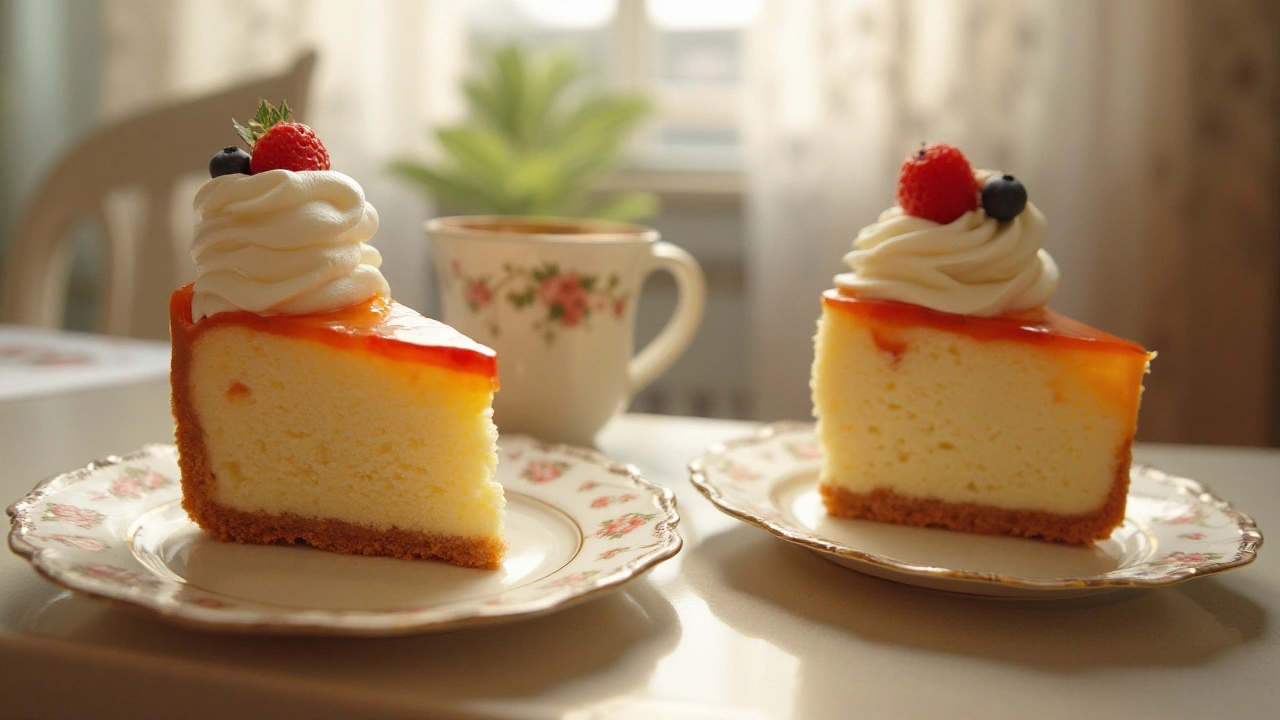
Baking Methods and Temperature Control
When it comes to crafting the perfect cheesecake, baking methods and temperature control are pivotal factors that influence the end result. Different approaches can drastically shift your cheesecake from dense to fluffy. Typically, cheesecakes are baked at a low temperature for an extended period, allowing for a smooth, creamy consistency. The slow and steady heat prevents the surface from cracking and ensures the center sets just right, maintaining the delicate balance between firmness and creaminess. Maintaining consistent oven temperature throughout the bake is crucial as even minor fluctuations can affect the texture negatively.
One popular method employed by bakers is using a water bath or bain-marie. This technique involves placing the cheesecake pan inside a larger pan filled with hot water. The water bath ensures gentle, even cooking, which helps in achieving a silky smooth texture. Because cheesecakes are often delicate, the moist heat from the water bath prevents the cake from drying out and developing an unsightly crack. An important tip is to fully wrap the outside of your springform pan with aluminum foil to prevent water from seeping into your cake.
On the alternative side, some bakers have found success with the no-bake cheesecake method, which involves chilling the cake to set rather than baking it. While not traditional in structure, chilling can achieve a brilliantly fluffy cheesecake since it bypasses the potential pitfalls of the baking process. Nevertheless, one should be cautious to follow the recipe measurements and steps precisely to avoid an overly firm or gelatinous texture.
The Perfect Temperature
The temperature settings play a starring role in the baking process. Standard baking conditions for cheesecakes hover around 325°F (163°C). This temperature is ideal for gently setting the cheesecake without overcooking the edges. One pro tip many chefs advocate is baking at 225°F (107°C) for an hour and then turning off the oven, allowing the cheesecake to rest in the slowly lowering heat. This extended 'carry-over' cooking time softens the cheesecake further, providing post-bake results closely aligned with a carefully crafted custard. Opening the oven too early can cause sudden drops in temperature that lead to assumable catastrophes like cracked tops.
“A cheesecake is only as good as its temperature control,” says renowned pastry chef Alice Medrich. This declaration underpins the importance of temperature patience—that immediate gratification found in increasing the heat is no friend to cheesecakes aiming for perfection.
After baking, allowing the cheesecake to cool gradually to room temperature before refrigerating is also important. This approach prevents shrinkage and ensures that your cheesecake achieves its desired consistency. Whether seeking dense or fluffy results, impeccable attention to temperature and method will undeniably enhance your cheesecake prowess.
The Role of Chilling
The chilling process plays a crucial role in determining whether you'll slice into a dense cheesecake or a fluffy one. It’s not just a finishing touch; it is essential for setting the desired texture of your cheesecake. Whether your goal is dense and creamy or light and airy, understanding the science behind chilling can take your cheesecake game to a whole new level. After baking, the cheesecake’s heat and steam need an opportunity to release slowly. This is often best accomplished through a gradual cooling process in the fridge. For cheesecakes, patience truly is a virtue, and allowing your cake to chill adequately can significantly affect the outcome.
Chilling allows for the flavors to meld beautifully and for the structure to stabilize, avoiding cracks on the surface that can sometimes occur when cooled too quickly. One might ask, ‘Why is my cheesecake raw-looking if not properly chilled?’ The answer to this lies in the cheesecake’s ability to solidify as it cools. The chilling period allows cheeses like cream and mascarpone to mingle with the sugars and eggs, setting the structure into its finished form in the absence of high heat.
“A well-chilled cheesecake is like fine wine; it simply gets better with time”— Baker’s Delight Magazine
For those who are often in a rush, think of cheesecake as an exercise in restraint, offering a treat that rewards those willing to let it rest. A minimum six-hour chill period is generally recommended, although overnight chilling often yields the best results. On the other hand, a cheesecake that hasn't been given ample chilling time may not achieve the clean slice and lush mouthfeel many are after. Remember, rushing this process might sacrifice the integrity you seek in your dessert.
When comparing dense and fluffy textures, the duration and temperature of the chilling process can subtly alter the final product. A lower temperature over an extended timeframe tends to enhance the cheesecake’s dense quality, while slightly warming temperatures with a shorter chilling window may favor a fluffy rise. It’s the subtle dance of choosing the right chilling environment that makes your cheesecake a culinary masterpiece.
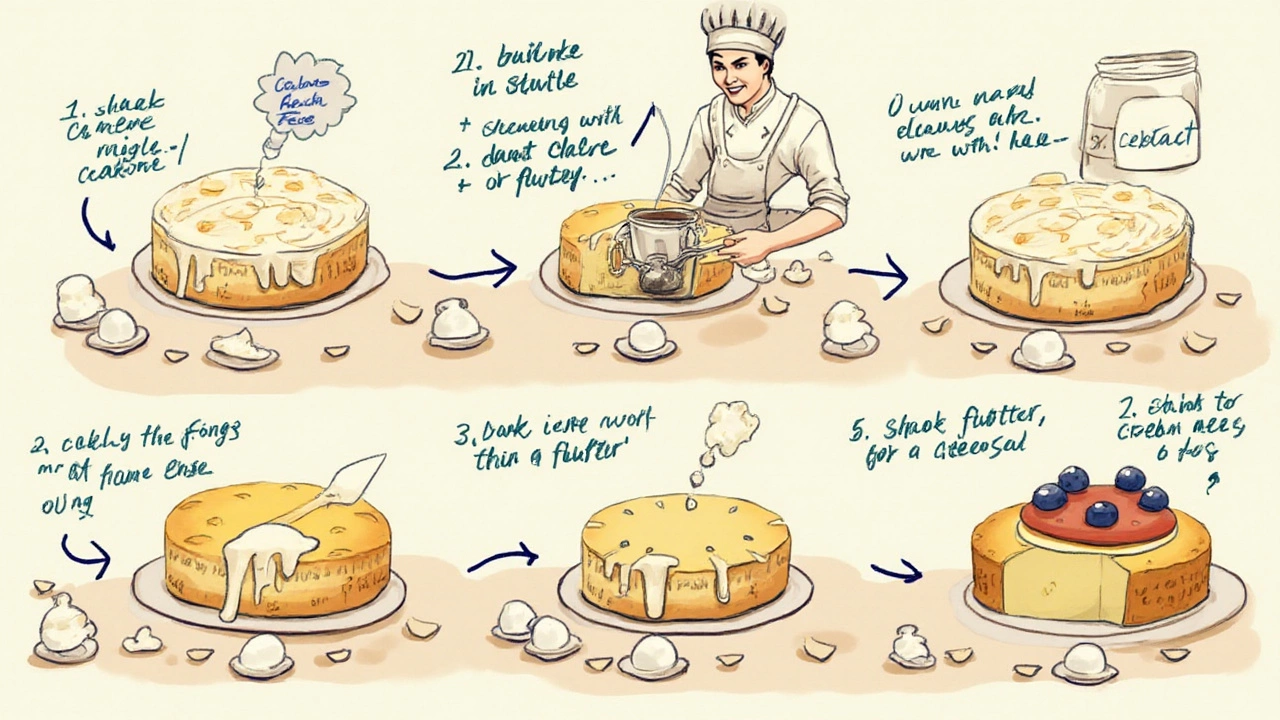
Tips for Perfect Cheesecake Every Time
Achieving the perfect cheesecake every time may seem like a monumental task, but with a few tried-and-true tips, it's entirely possible. First, begin by ensuring all of your ingredients, particularly the cream cheese and eggs, are at room temperature. This simple step is often overlooked, but it plays a vital role in creating a smooth and lump-free batter. Room temperature ingredients blend more seamlessly, reducing the risk of a dense texture when you’re aiming for something with a bit more lightness.
Another critical aspect to consider is your mixing technique. Overmixing can incorporate excess air into the batter, leading to a fluffy finish when you were perhaps aiming for a rich, dense cheesecake. To get that dense texture, mix just until the ingredients are combined. Conversely, if it’s lightness you’re after, give it a few more turns. As Anna Olson, a renowned pastry chef, mentions, "Gentle and patient mixing is the heart of every successful bake."
Baking is where a lot of things can go awry, but it doesn’t have to be daunting. Invest in a springform pan, which offers an easy release and minimizes cracking, and make sure to grease it to avoid sticking disasters. Additionally, consider using a water bath, a technique that maintains an even baking temperature, preventing those unsightly cracks or the dreaded overbaked edges. Though finicky at first, this method ensures even heat distribution.
Temperature and time are also crucial. Setting your oven to the right temperature and resisting the urge to peek inside while it bakes can be tough. Remember, every time the oven opens, heat escapes, affecting the bake time. Allowing the cheesecake to cool gradually in the oven with the door cracked open once baking is complete works wonders in preventing cracks. Afterward, patience comes into play. Chill your cheesecake thoroughly before serving, ideally overnight, to let those flavors meld beautifully.
For an extra touch of perfection, use a sharp knife dipped in hot water to slice through your cheesecake. This ensures smooth cuts without dragging and ruining the texture. By keeping it simple and consistent, you’ll find sweet success in every slice. Adjust your methods and ingredients gradually to suit your preferences, and in no time, you’ll have a cheesecake that’s tailored to your palette's fondest wishes.

